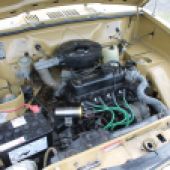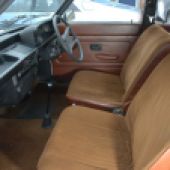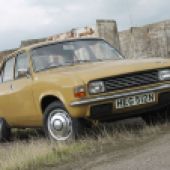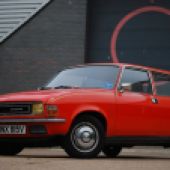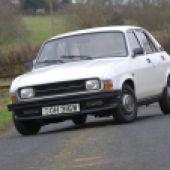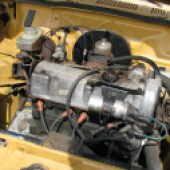Few cars have been on such a reputational rollercoaster as the Austin Allegro. But can a buyer today overlook the car’s troubled past?
Words: Jack Grover
In 1973 the initial press reviews for the Austin Allegro were optimistic – compared to its bestselling but ageing BMC ADO16 predecessor, it was more comfortable, had a bigger boot and a more accessible engine bay, had bigger engines with optional five-speed gearboxes and a wider range of trim levels. Thanks to Hydragas suspension, front-wheel drive and rack-and-pinion steering it was much more modern to drive than many of its more traditional rivals and returned good fuel economy. A promising small family car for the 1970s, then?
But the buying public was more savvy and perhaps less dazzled by corporate marketing than the gentlemen of the press. What the Allegro offered with one hand it took with the other. A more comfortable driving position and a bigger boot came at the cost of a cramped-feeling cabin, poor rear leg room and awkward access to the rear seats, even on the four-door models. Hydragas mostly offered a better ride but was completely flummoxed by potholes and wallowed in corners.
And then there were the awkward looks; while Ford and Vauxhall embraced glamorous coke-bottle lines for their saloons and the Germans and Italians offered crisp, sleek designs, the Allegro had a tall, dumpy shape, bulging sides and a pudgy, pig-eyed ‘face’. Not the sort of car you found yourself stealing a second look at as you walked away.
The ADO16 had been a sales phenomenon. The Austin Allegro was not. It drifted between fourth and seventh in the British sales charts throughout the 1970s. As was British Leyland’s way, the Allegro 2 of 1975 was the car that should have been launched in 1973, with numerous small improvements to correct the flaws in the original. By then the damage had been done and the Allegro would never recover either commercially or reputationally.

The Allegro 3 of 1979 was a decently made, mechanically robust and comfortable small car, but by then it was much too little, much too late. The Allegro’s time on sale was overshadowed by British Leyland’s collapse and government rescue. The Allegro became inextricably linked with the failure of its industry and a target for the new national pastime of ‘Leyland bashing’, which damaged the car’s already poor reputation even further.
The Austin Allegro was always oddly out of step with what the market wanted – it was very advanced in areas that buyers largely didn’t care about and lacklustre in areas that they did. It was the bigger, more conventional, ‘style over substance’ Ford Cortina that took the spot of Britain’s bestselling car for the 1970s. Meanwhile, the Volkswagen Golf – in many ways the opposite of the Allegro approach, with a fashionable hatchback body over unadventurous mechanicals – set the standard for the small family car class and spawned imitators that the Allegro couldn’t match.
It was a symptom of British industrial malaise and a national embarrassment. Few mourned the ending of production in 1982. That the Allegro’s successor, the Maestro, was deliberately and unashamedly cribbed from the VW Golf really sums up what a misstep the model was.
Bodywork
In its favour, the Austin Allegro proved to be remarkably rust-resistant by the standards of the 1970s. That’s a distinctly low bar though; corrosion is still the biggest killer of Allegros and the top concern for buyers.
The Allegro does without a front subframe, the front suspension and drivetrain being mounted into structural inner wings. The rear suspension is mounted to a cross-tube which also serves as a sort of vestigial rear subframe. This means that the condition of the body structure is key, and also that repairs or restoration is somewhat more complicated, and therefore expensive to carry out. New panels or body sections are scarce, so you’ll be relying on a dwindling stock of new/old or good secondhand parts, which are much more expensive to source than equivalents from better-supported classics.
Most of the Allegro’s rot spots are the ones generically found on any old car – wheel arches, inner wings, sills, footwells and boot floor. The nastiest Allegro-specific one is the bulkhead. Blocked drains for the heater plenum and perished windscreen seals let water sit where it shouldn’t and cause structural corrosion that is prohibitively difficult to put right. Check for damp footwells and misty windscreens and inspect the area along the bottom of the screen and up the A-pillars carefully.

The front valence and radiator surround are structural on the Allegro, so look here too. Be especially attentive to the area around the headlamps and indicators and the front fog lamps (or the dummy grilles which go in their place on lesser models). Check from inside the engine bay too. The outer front wings go at their rear lower corner, which in extremis can also spread to the bulkhead/door hinge region and the front of the sill. Good replacement front wings cost several hundred pounds per side (plus prepping and painting).
On the Allegro 2 and Allegro 3 there are plastic trim parts that fit over the outer sill, which can hide rust until it’s very bad. Lift the carpets on the inside to get an idea of the condition of the inner sill. Ideally you want to be able to remove the plastic to see the metal underneath – if that’s not possible jacking up the car on one side (assuming the jacking points are solid…) and checking the doors still unlatch and close properly will provide a check that an Allegro still has structural integrity.
Be sure that any rust in or near the rear wheel arches isn’t spreading to the mounts for the rear suspension cross-tube. The bottoms of the doors also go when the drain holes get blocked. Replacement door skins are about £200 each when they can be found.
Engine and transmission
Neither the 1098cc nor 1275cc versions of the trusty A-Series in the Allegro give any cause for concern so long as they are not worn out from age. Look and smell for oil in the exhaust, especially under load from worn cylinder bores. Check for combustion blow-by escaping out the oil filler cap when idling, which will usually also push a lot of oil out of the crankshaft, timing case and rocker cover gaskets. Listen for rumbling from worn bottom end bearings under acceleration and flickering oil pressure warning lights at a hot idle.
The 1275cc engine does tend to let go of its head gasket at high mileage or if it’s been overheated, so look for signs of oil and water mixing either in the header tank or inside the rocker cover. Overheating is often caused by clogged coolant passages, a failed electric cooling fan or a degraded radiator, so check these areas. Even the 1098cc should pull quite willingly, and if it doesn’t then suspect low compression, a worn camshaft or an engine that needs a carburettor overhaul and a tune-up. Listen for rattles from worn valve tappets and slapping from a worn cam chain and timing gears.
The E-Series (here in 1485cc and 1748cc guises) is less robust and parts are harder to find today, but this is mostly relative and it is not an especially fragile engine. The checks are the same as for the A-Series but be especially on the lookout for head gasket failure, out-of-adjustment valves and worn timing chains. Also be aware that putting right any faults or general wear will not be as simple or as cheap as it is with an A-Series.
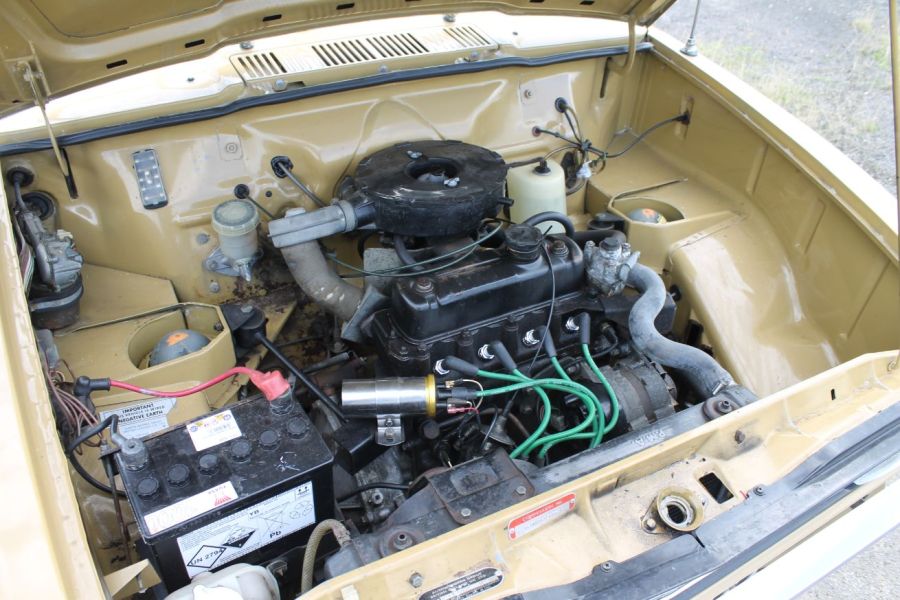
The A-Series cars use the four-speed gearbox in the sump familiar to generations of Mini enthusiasts. Although it will get noisier and rattlier with age, outright failure is very much the exception. The small-engined Allegros were praised for the quality of their gearshift so if it’s not slick and smooth then either the selector rod bushes are worn or the gearbox is extremely tired. Engine and gearbox share oil, so check that what’s in the sump is clean, doesn’t smell ‘burnt’ and isn’t full of metallic particles. Gear whine is the norm, especially in the lower gears, but shrieks, rattles or rumbles point to worn bearings. Rebuilds are not expensive and are worth doing so long as the rest of the drivetrain is in good condition.
The E-Series comes with the five-speed gearbox infamously used in the Austin Maxi, albeit here in the later form with the rod-type gearchange. It’s still vague and mushy, even when in perfect condition. It’s common for down-changes to ‘miss’ if done too hurriedly and for a ‘knack’ to be needed to get into fifth gear – they were like that when brand new. Just be sure that the bearings and synchromesh are in decent condition as rebuilds are expensive as they rely on new-old stock parts these days.
Early Allegros suffered from rapid wear and failure of the front driveshafts, but these were solved in the Allegro 2 and probably all will have been updated by now. Just make a few tight turns or a circle in both directions to listen for clacking sounds from worn CV joints, but new ones are £50-100 each and are readily available new.
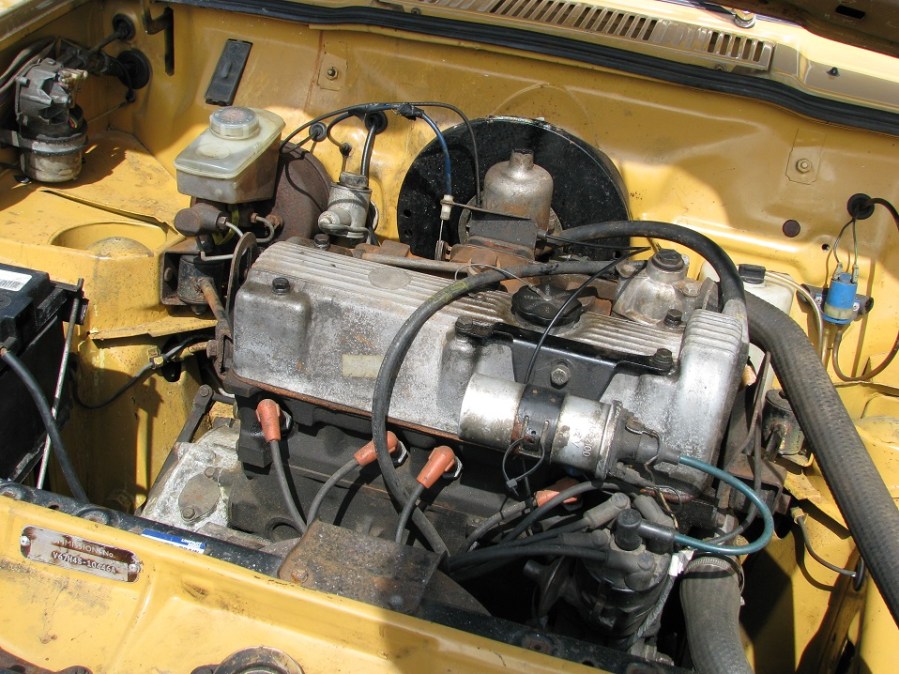
Suspension, steering and brakes
Not so long ago the presence of Hydragas suspension on the Austin Allegro was something of a ticking timebomb, as production of new Hydragas displacers ceased in the early 2000s and they have both a service life and a shelf life as even unused units gradually lose gas pressure. Fortunately there are now firms out there that can re-gas displacers and dismantle, repair and rebuild failed ones so the suspension should provide few causes for worry in the future.
Check that the car is sitting at roughly the right height – officially it should be 36cm from the centre of the hubcap to the lower lip of the wheel arch. Any car should definitely sit level side-to-side and ideally level front-to-back, although when empty and with not much in the tank they will sit tail-high. Do a ‘bounce test’ on each corner; the springing should be very yielding with a lot of body motion that is restrained after one cycle by the internal damping. If it’s stiff or there is very little motion then the displacers have lost too much gas (which is the springing medium) and are almost full of fluid. They need to be re-gassed at the very least, which will cost around £100 per corner.
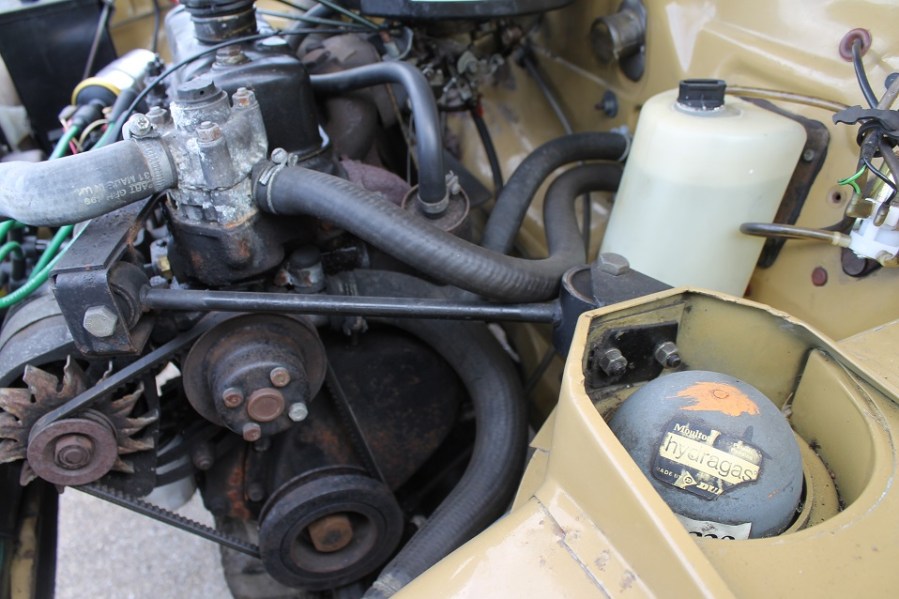
If the car is sitting too low then repressurising the fluid part of the system will restore the ride height, so long as there is enough gas in the displacers to still provide springing. You may still find an independent garage with a Hydragas pump, or you can borrow one from the Allegro Club International as a member, or you can buy one for about £120.
Otherwise check the pipework running between the displacers at the front and the back for signs of rust and fluid leaks (often shown more as a weep from either a pipe union or a patch where rust has thinned out the pipework).
Thankfully the rest of the Allegro’s running gear is much more straightforward. The rack and pinion steering is like a big Mini and should be light, smooth, accurate and direct. The Allegro always had very good roadholding and stability despite generous amounts of body roll. If it’s wandering around the road or skittish (and it’s not because the Hydragas is nearly solid) then suspect worn steering ball joints. Knocks from going over bumps are likely to be worn bushes for the front anti-roll bar.
All Allegros have front disc brakes and rear drums, with servo assistance on the larger-engined and higher-spec models. No specific checks are needed – just be sure that the fluid is clean, there are no leaks from the master or wheel cylinders and that the discs aren’t scored, warped or worn. Stopping power was always decent and the car should pull up smartly and straight. It’s all standard parts-bin stuff so any defects can be put right with little effort and minimal cost.
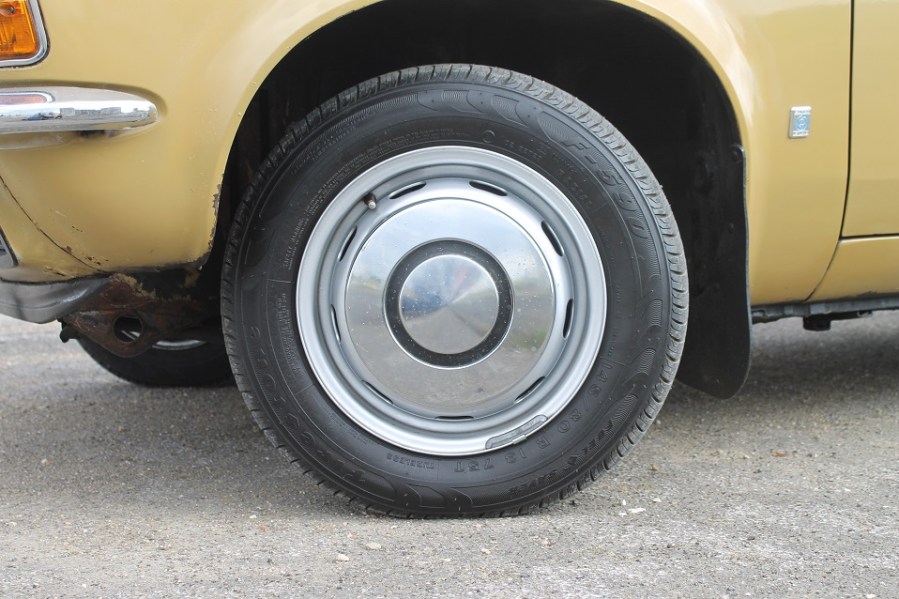
Interior, trim and electrics
Early Allegros were pretty basic, especially the smaller-engined ones but in general the less stuff there is in the interior the better. The vinyl trim survives much better than the velour or nylon cloth of the ones further up the range and which became more common on later models. The dashboards on the original and the Allegro 2 versions were quite fragile and the plastic could warp around the heater or crack at the top where the sunlight gets to it. These days you’re more likely to see problems such as sagging headlining and delaminating door cards.
Putting right a shabby interior will be difficult as it will either require scouring the internet and autojumbles for better used or new-old stock parts or the services of an upholsterer to put it right from scratch. None of this comes cheap and after the structural condition of the body the interior should be your biggest concern. Switchgear is easier to replace since a lot of it’s BL standard stuff but instruments on the first two versions was Allegro-specific. So check it works, although no Allegro was over-burdened with dials and an instrument repairer should be able to put right any faults – for a price. The Allegro 3 had a much more rugged fascia and shared more dials and parts with the likes of the Ital and Metro.
Electrics are all typical British Leyland fare with standard Lucas parts. So long as the wiring loom itself hasn’t degraded (check the condition of the connectors and feel that the wiring hasn’t gone brittle) most faults are down to corroded earths or previous owner bodges – you don’t want to see a bird’s nest of wiring ‘repairs’ from the days when Allegros were cheap and disposable. Check that none of the lighting circuits interfere with each other (rear indicators also causing flashing tail lamps is a classic, due to bad earths within the tail lamp unit) and that the fuse box under the bonnet isn’t full of corroded copper inside.

Austin Allegro: our verdict
We’re now at the 50th anniversary of the Austin Allegro and it enjoys reputation that’s probably at a high point. Once the nadir of taste, a beige Allegro now has a strange semi-ironic appeal, and that appeal is becoming less ironic by the day. The average condition of the surviving cars is good and they’re overwhelmingly preserved and pampered classics rather than dog-eared bangers found in the free-ads pages.
The Allegro is a collectable and strangely loved slice of motoring history, as well as being regarded as a practical and characterful classic that will start conversations wherever it goes. While they won’t trouble an Aston Martin DB5 (or even a hot Ford Escort) any time soon, values are strong and have risen significantly in the past decade. We’re also seeing an increasing number of restored Allegros as their value – financial and emotional – makes it worthwhile. You’ve never needed to make fewer excuses for buying an Allegro.
Prices have settled after the strong rises of the 2010s but the Allegro still sits in the affordable category. Pay £2500-4000 for a good but average example – condition determines price far more than spec. That said, early examples with the ‘Quartic’ steering wheel carry a 10-20 per cent premium. A really good Allegro 1300 or 1500 in show condition will go for £6000 or a little more. Rarities like the 1750SS, 1750HL or the ‘hot’ Equipe go for significantly more, with prices in the £6000-8000 range for the very best of the very few examples left. Standard 1750 and Vanden Plas models slot somewhere in between.
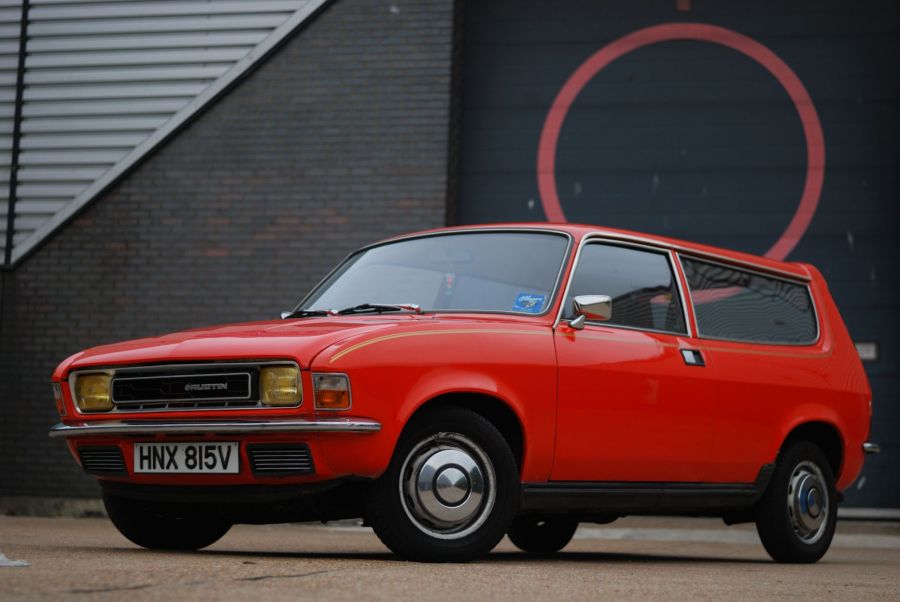
Austin Allegro timeline
1973
Initial launch of range in May, with two- and four-door saloon models in 1100, 1100DL, 1300, 1300DL, 1300SDL, 1500SDL, 1500 Special, 1750 Special and 1750 Sports Special trim levels.
1974
Vanden Plas 1500 with coachbuilt interior and bespoke grille launched in October. 1750 model gains twin-carb engine. HL trim replaces Special. ‘Quartic’ steering wheel dropped.
1975
Three-door estate model introduced in 1300SDL and 1500SDL versions in April. The Allegro 2 is introduced in October with improved suspension, better rear seat leg room, modified engine mountings to reduce noise, improved cabin ventilation and higher overall gearing.
1979
Equipe model (2700 total production) introduced in July as a two-door 1750HLS with alloy wheels and unique side stripes. The Allegro 3 comes in September with a new dashboard, different bumpers, grille and rear lamps, a front spoiler and quad circular headlamps for the HL model. 1500HL now has twin carbs.
1981
In February lower-spec models gain the A-Plus engine with improved power, economy and refinement. The 1100 model switches to the 998cc engine. At the same time the automatic version of the Vanden Plas switches to the 1750 engine.
1982
The last Allegro is built in May after total production of 642,350.




